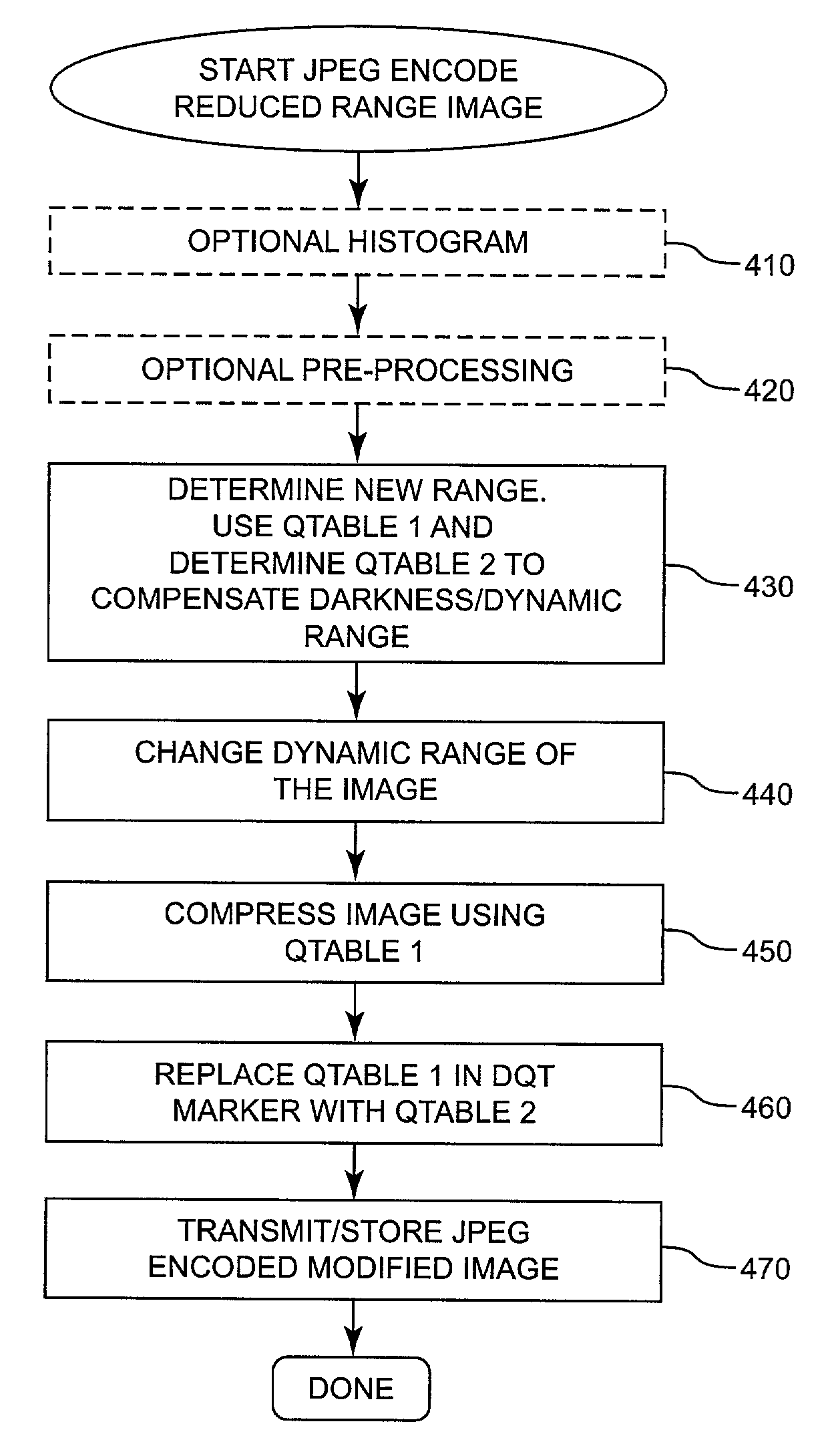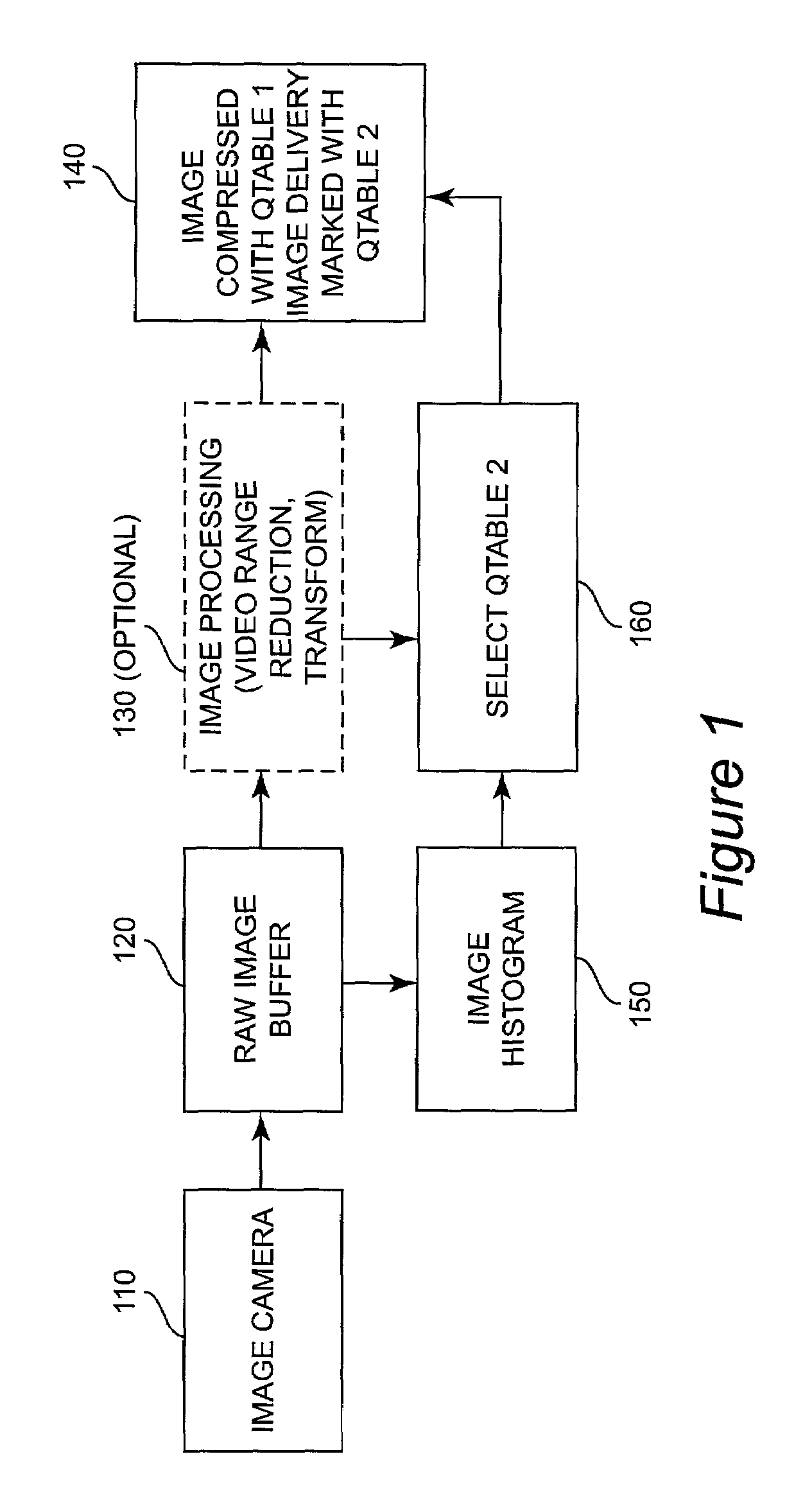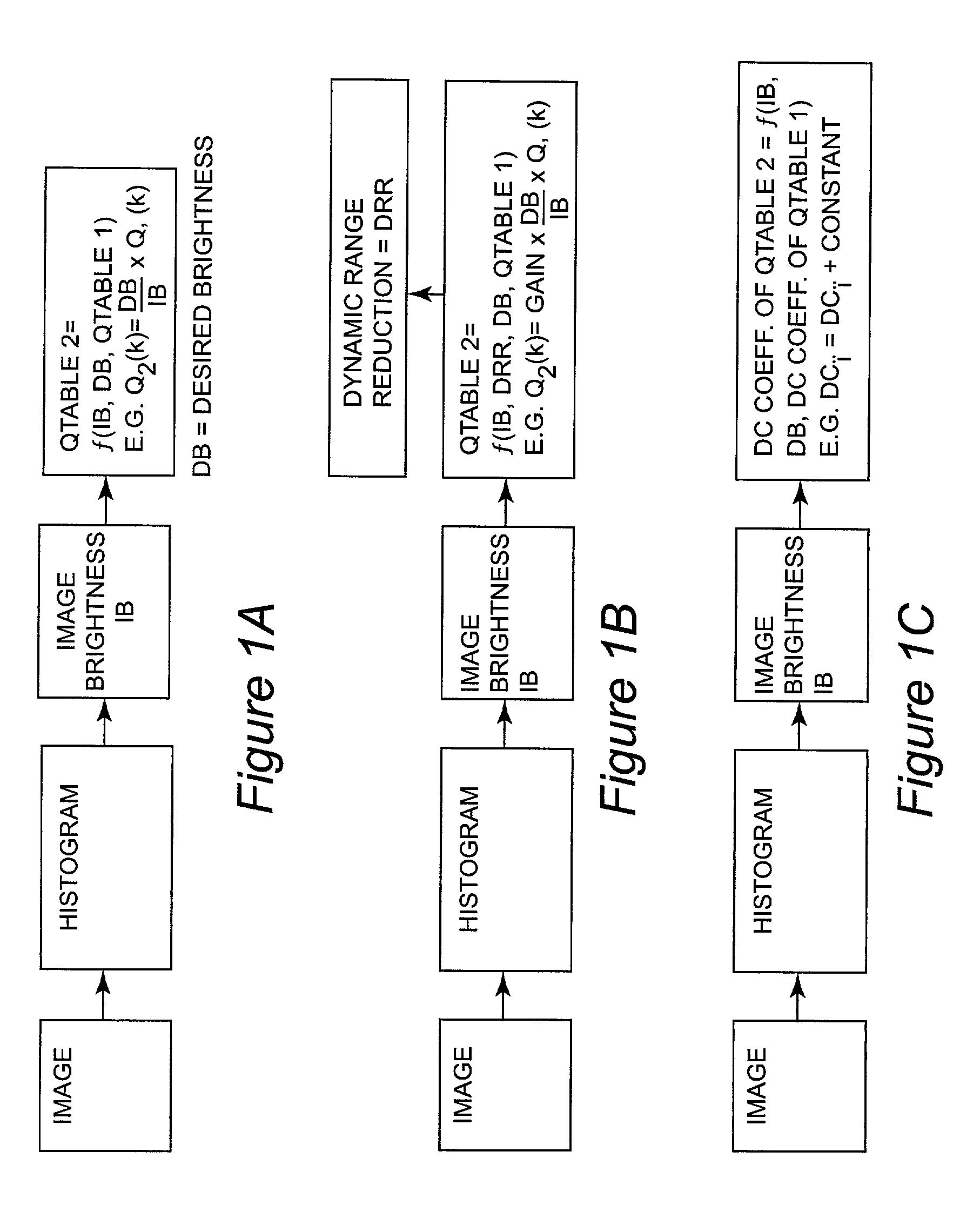Adaptive generation of Q-table2 for improved image quality
a technology of image data and q-table, applied in image data processing, instruments, television systems, etc., can solve the problems of image data compression complexity, possible errors, and application requirements that require severe trade-offs between image quality and data storage or transmission time, and achieve the effect of improving the decoding imag
- Summary
- Abstract
- Description
- Claims
- Application Information
AI Technical Summary
Benefits of technology
Problems solved by technology
Method used
Image
Examples
Embodiment Construction
[0029]Referring now to the drawings, and more particularly to FIG. 1, there is shown a high-level block diagram of the apparatus and method of the invention. Real-time scanning and digitization of an image is generally performed as a pipelined process. The image camera 110 delivers analog image values of respective pixels in the order of a raster of arbitrary but preferably standardized pattern to a raw image buffer 120 where the pixel data is temporarily stored in digital form. This data is extracted, as needed, for image processing 130, during which the dynamic range is preferably reduced by an empirically determined amount, depending on the nature of the document, as disclosed in the above-incorporated U.S. Patent and coding into a compressed digital form, preferably in accordance with the JPEG standard, including a discrete cosine or other orthogonal transformation and quantization are performed. The result, including blocks of orthogonal transform coefficients and a quantizatio...
PUM
 Login to View More
Login to View More Abstract
Description
Claims
Application Information
 Login to View More
Login to View More - R&D
- Intellectual Property
- Life Sciences
- Materials
- Tech Scout
- Unparalleled Data Quality
- Higher Quality Content
- 60% Fewer Hallucinations
Browse by: Latest US Patents, China's latest patents, Technical Efficacy Thesaurus, Application Domain, Technology Topic, Popular Technical Reports.
© 2025 PatSnap. All rights reserved.Legal|Privacy policy|Modern Slavery Act Transparency Statement|Sitemap|About US| Contact US: help@patsnap.com



